2 February, 2003
February 2, 2003
Ending the Season
On January 27th, Erin and I flew back to McMurdo to begin our teams' closing of the season. John, Jen and Karen stayed in the field to winterize and close the stream's gage boxes, while we transported all of the samples collected in the field to Crary Lab where the job of preserving and processing the algae took place.
You may remember from previous journals, at each algae transect we collected four samples at five sites for each color of algae and moss. One of the samples was preserved with formaldehyde to be shipped back to the University of Colorado, CU. One sample is tested in the lab at McMurdo for chlorophyll A. Another is frozen and will be shipped back to CU, and the last is one that we performed an ash free dry mass technique to determine the amount of carbon in it. Except for the sample in formaldehyde, all had to be filtered first.
Erin and I worked in the lab all week filtering, labeling, packing, drying and weighing the samples. Permits had to be obtained to carry the samples through customs in New Zealand and back into the US. They have to be kept frozen as they travel, so special arrangements were made to be met in New Zealand and Los Angeles with fresh ice. This part of the work is extremely important. If the samples are lost or mishandled, a whole season of research could be lost. It was a busy week!
I will post a few more journals as stories come to mind, but essentially the research season has ended and my time here is coming to an end. I am just waiting now for a flight home.
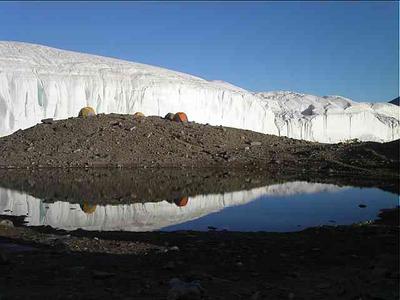
1. Our last day at Lake Hoare dawned sunny and beautiful, This is one last look at Glacier Heights, our tent community facing the Canada Glacier.
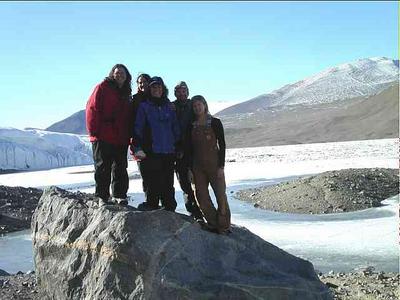
2. It was hard to say good-bye to our team as we waited for the helo to take half of us back to McMurdo. Here we pose on the rock outside Lake Hoare hut in front of the Canada Glacier.

3. Arriving back in McMurdo, samples had to be un packed, sorted and delivered to the appropriate labs.

4. Daryl entering numbers into his data base from information gathered in the field.
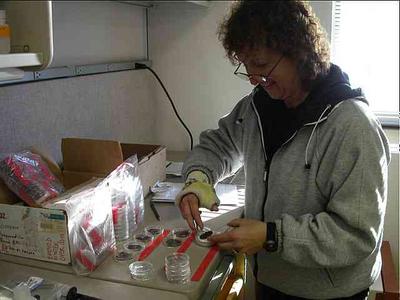
5. Samples had to be removed from their petri dishes, placed on pans we had numbered, recorded and then dried for 24 hours at 100 degrees. The samples were then weighed and burned at 500degrees. We re-weighed them and the difference in weights was the amount of carbon that had burned off.
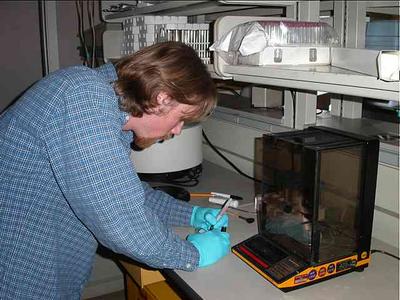
6. Tucker Stevens beginning to process our chloryphyll A samples. Tucker is from Minnesota and worked on the limnology study earlier in the season. He has been hired to finish up lab work for several of the field teams, including ours.
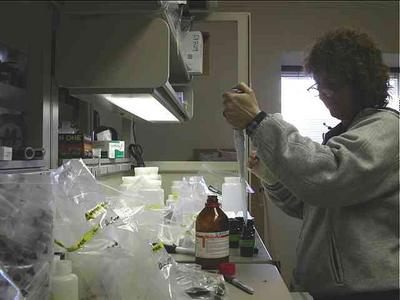
7. Wearing a cast required a little finesse to handle the formaldehyde, tiny sample bottles and caps, and the syringe!
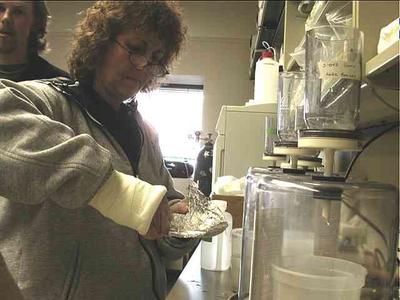
8. I am removing a filter to place on the filter towers in the foreground. Many of our samples were filtered in the field camp, but the last few streams had to be finished back in the lab at McMurdo.
Contact the TEA in the field at
.
If you cannot connect through your browser, copy the
TEA's e-mail address in the "To:" line of
your favorite e-mail package.
|
